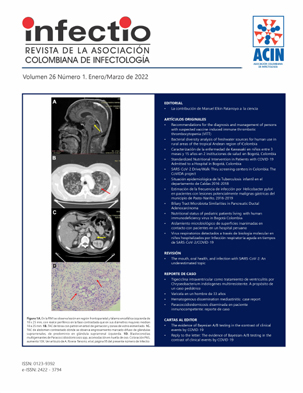Bacterial diversity analysis of freshwater sources for human use in rural areas of the tropical Andean region of Colombia
Contenido principal del artículo
Resumen
Potable water supply and sanitization in rural areas in developing countries are still inadequate. The main risk associated with unsafe drinking water is the infection with pathogenic microorganisms. Objective: In this study, we investigate the bacterial diversity and the potentially pathogenic bacteria in water samples from different points of distribution in three rural villages from the Andean region of Colombia. Methods: Illumina libraries for water samples were prepared and sequenced using 300 bp paired-end MiSeq protocol, the bioinformatic analyses were performed with Mothur pipeline and the phyloseq package in Rstudio. Results: The microbial community composition showed statistically significant differences according to the village and the sample origin. Alpha, Beta, and Gammaproteobacteria were the dominant class detected in all water samples. The most relevant pathogenic genera detected in the surface were Legionella, Mycobacterium, Yersinia, Burkholderia, and Rickettsia. In the tap water samples, potential pathogens like Streptococcus, Staphylococcus, Corynebacterium, Nocardia, and Escherichia/Shigella were detected.

